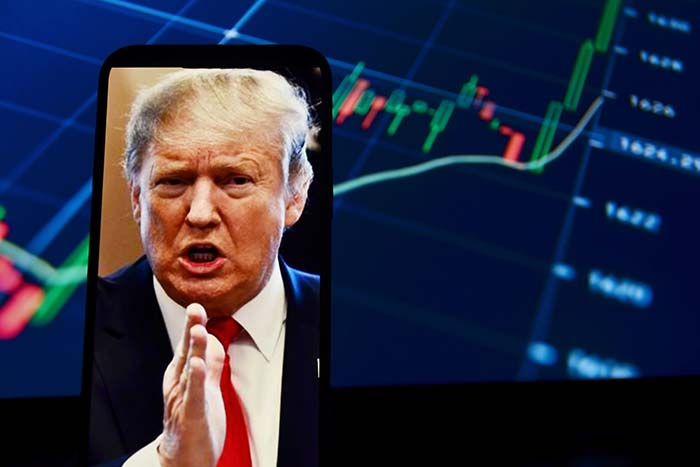While nobody can predict the future, it’s always a good idea to get a sense of the major factors that could drive the market up or down over the next 12 months.
A month ago, I wrote about the expected factors that would impact 2025. They include potential deregulation and tax reform pushed through Congress by the Trump administration, lower borrowing costs resulting from Federal Reserve interest rate cuts, and higher profitability among publicly traded companies.
(A month later it looks like lower borrowing costs are iffy, as the Fed has signaled it’s on hold for the moment.)
But there’s another way to look at the market and what to expect. That’s through consistent historical market patterns. And one of those patterns is providing real insight right now.
I’m talking about the presidential market cycle, which analyzes market returns in each year of a four-year presidential term. The pattern has been uncannily consistent throughout American history.
Essentially, between 1928 and 2021, the market performed significantly better in the final two years of each president’s term (on average) than in the first two years.
And the graph for former President Joe Biden’s four-year term looks very similar, if a bit more bullish. The S&P 500 rose a very modest 2.2% in Biden’s first two years and then soared during the last two years – up more than 50%.
Uncertain Ambitions
Why does the market perform so much better during the second half of a new president’s term?
Well, much of it is because every new president arrives in the Oval Office with grand ambitions in both their foreign and domestic policies.
This can give markets hope, of course. But it can also disrupt them when things inevitably don’t go according to plan. And Trump 2.0 is, so far, among the most ambitious presidents in U.S. history, both on domestic and foreign policy.
Trump continues to talk about acquiring – through force, money, or suasion – the Panama Canal, Greenland, Canada, and the Gaza Strip.
The last major territorial acquisitions – Alaska, Hawaii, and Puerto Rico – for the United States occurred in the 19th century (unless you count several acquisitions of tiny islands in the 20th century). So any acquisition or annexation of the above-mentioned territories would be monumental and could rock the economy and the market.
Domestically, Trump is seeking lower taxes – for both individuals and companies – as well as deregulation. Neither is uncommon for an incoming Republican president.
But he’s going a lot further on other domestic policies. He’s seeking to completely overhaul the federal government and deport millions of immigrants. And most disturbing for corporate America, Trump is now implementing – or threatening – significant tariffs on major trading partners and some industrial sectors like steel and aluminum.
Like them or loathe them, those tariff policies in particular are proving highly disruptive to companies and the stock market. Unusual moves in bond yields this week are signaling that investors expect the tariffs to reignite inflation and force the Fed to consider raising its target rate once again.
And some stock analysts are revising their estimates of earnings growth this year downward, in part due to the threat of tariffs and higher prices they can induce. Goldman Sachs estimates that a 5-percentage-point increase in the U.S. tariff rate would reduce S&P 500 earnings per share by as much as 3%. Bank of America says the tariffs on China, Canada, and Mexico could be an 8% hit to earnings.
The Pattern May Hold
As a result, I suspect that the four-year presidential market cycle may hold, at least until markets get some clarity on exactly what Trump plans to do.
So the outlook for 2025, at the moment, looks like enduring volatility. Buckle up.

